The WalkUP Wake Up Call: Dallas/Fort Worth
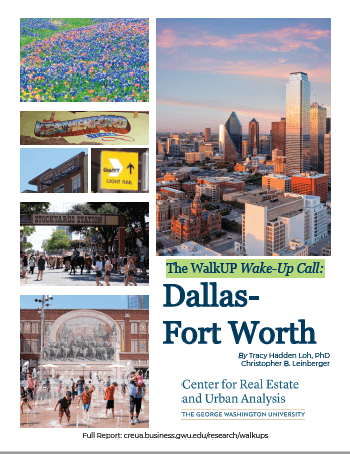
January 2019
Starting in the mid- 1990s in places like Uptown Dallas and Sundance Square in Downtown Ft. Worth, the market began to move back toward demanding walkable urban development once again. This report presents evidence of the surprising re-emergence of walkable urban places in metropolitan Dallas-Ft. Worth. Walkable urban development represents not only a rapidly growing market share of new development in the metro area today but, if metro DFW follows the lead of comparable metros, such as metropolitan Atlanta and Washington, DC, it will become the dominant form of new real estate development in the early and mid-21st century.
The WalkUP Wake Up Call: New York
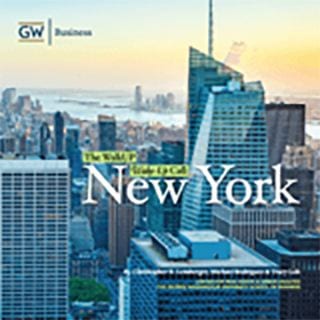
April 2016
In April we released our WalkUP Wake-Up Call: Metro New York, our walkability study of America’s largest metropolitan region. We partnered with the Regional Plan Association (RPA) on this study, and the RPA is planning to use many of the study’s findings as they present its Fourth Regional Plan later this year. This study – which follows reports for the DC, Atlanta, Boston and Detroit metro areas – was the first whereby CREUA not only evaluated the economic impact of walkable urban communities but also its social equity implications. The study was released in three separate venues throughout the New York area – Manhattan, Long Island and Northern New Jersey.
The WalkUP Wake Up Call: Washington, D.C.
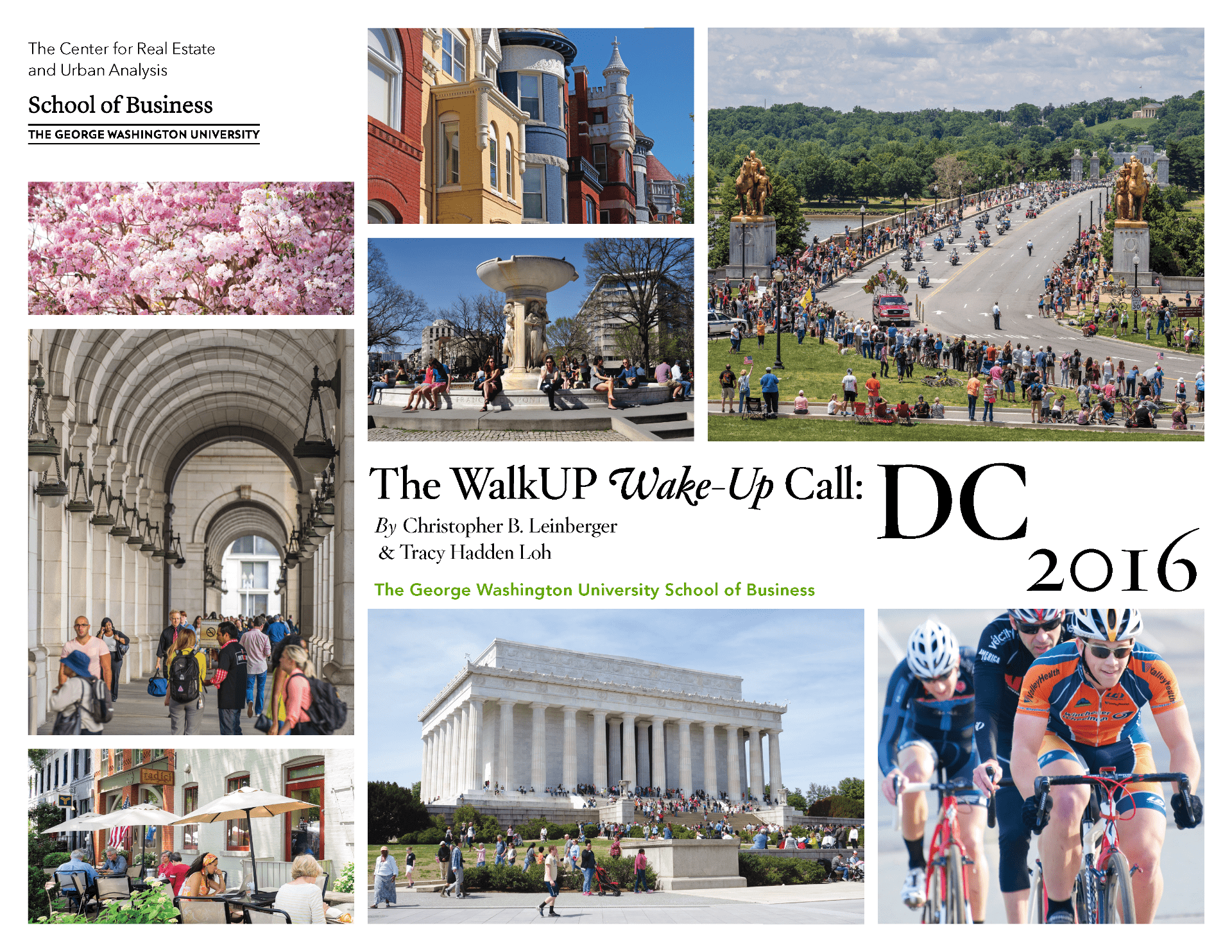
For this 2016 update, we have refined and expanded the WalkUPs
identified from the 2012 GWU WalkUP Wake-Up Call: DC report to
increase the accuracy and rigor of our analysis. Walkable urban land
is tremendously scarce in the DC metro area, but it has high pent-up
demand. WalkUPs and walkable neighborhoods combined are only 1.8
percent of the region’s area, but they face tremendous development
pressure for all real estate product types except industrial. This scarcity
has profound economic and social consequences.
The WalkUP Wake Up Call: Michigan Metros
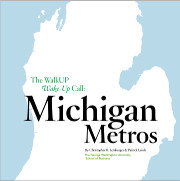
This research focuses on seven metropolitan areas in Michigan: Detroit/Ann Arbor, Grand Rapids/Muskegon/Holland, Lansing, Jackson, Kalamazoo/Battle Creek, Saginaw/Bay City/Midland and Flint.
The WalkUP Wake Up Call: Boston
Metropolitan Boston is leading the country toward a walkable urban future.
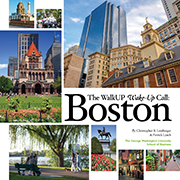
March 2015
For decades, real estate practitioners, observers and scholars studying land use have looked through an urban-versus-suburban lens. It is not unlike the classic social science joke about the tipsy guest who drops his keys at the front door as he leaves a party. While searching under a streetlight at the curb, he is asked, “Why aren’t you looking where you lost the keys?” He replies, “This is where the light is.”
This new research defines—in an entirely new way—the form and function of all land use in Metropolitan Boston’s 3,119 square miles. This study then ranks performance for all land in the region based on two criteria: economics and social equity. The economic performance metric measures both the real estate valuations, as a proxy for GDP (a GDP measure does not exist below the metropolitan level) and the tax assessment that drives most local government tax revenues. The social equity performance metric measures access to economic opportunity and affordability in terms of both housing and transportation costs.
The WalkUP Wake Up Call: Washington, D.C.
The Nation’s Capital As a National Model for Walkable Urban Places
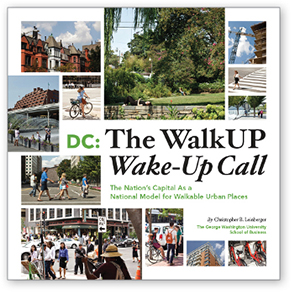
September 2012
The next real estate cycle will be defined by the rise of Walkable Urban Places (WalkUPs) and the fall of sprawl development. Metropolitan Washington, D.C., leads the nation in this trend. In this report, Christopher Leinberger defines D.C. metro’s WalkUPs, ranks their economic performance and social equity, and discusses findings and implications for developers and society as a whole.
The WalkUP Wake Up Call: Atlanta
The Poster Child of Sprawl Builds a Walkable Urban Future
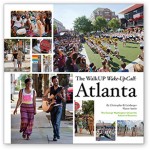
October 2012
Urban development in the second half of the 20th century gave rise to the sprawling geographies, connected by vast highway systems, that now characterize most U.S. metropolitan areas. Few metro areas are more sprawling than Atlanta, but things are changing quickly. Leinberger and Austin’s research has found a surprising and overwhelming recent reemergence of walkable urban development in metro Atlanta; in fact, it now accounts for the majority of the metro area’s development. In this report, the authors identify and rank Atlanta’s established and up-and-coming WalkUPs on their economic performance and social equity. Their insights will help developers, real estate professionals, and urban planners determine the most productive places to invest capital and the initiatives most likely to stimulate walkable urban development.
